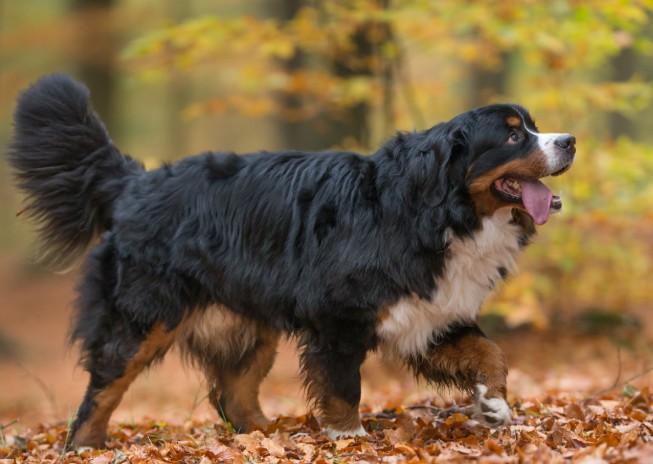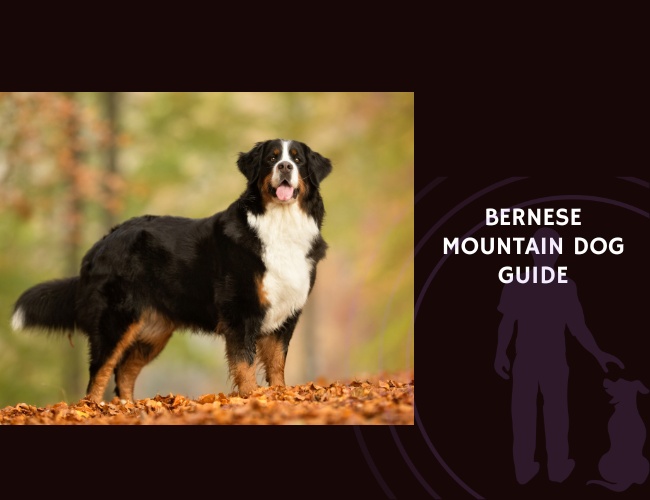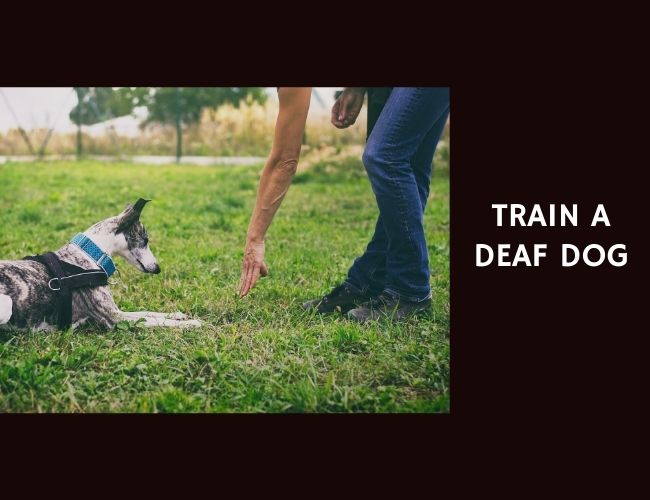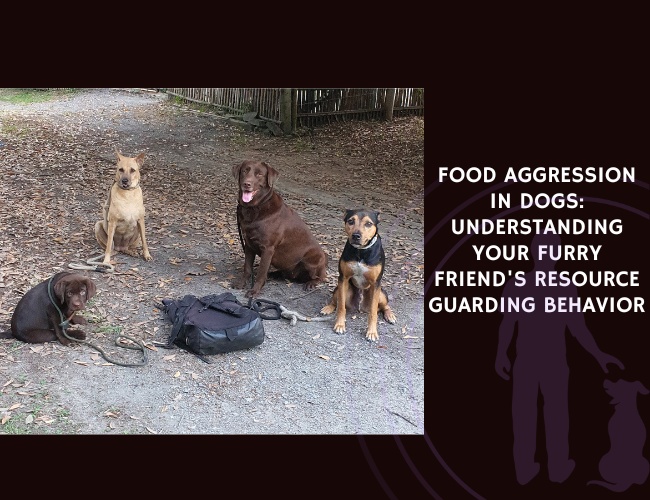Introduction: Meeting the Swiss Mountain Gentle Giant
Picture a dog with the strength to pull a thousand pounds, yet gentle enough to be trusted completely with your toddler. The Bernese Mountain Dog embodies this beautiful paradox—a working breed from the Swiss Alps that has captured hearts worldwide with its tri-colored coat, soulful eyes, and remarkably sensitive nature. Originally bred as farm dogs in the Canton of Bern, these magnificent companions carry centuries of heritage in their genes, from pulling milk carts through mountain passes to serving as loyal family guardians.
But here’s what you might not know: beneath that striking appearance lies one of the most emotionally intelligent breeds you’ll ever encounter. Your Bernese doesn’t just live with your family—they become woven into its very fabric, sensing every mood shift, celebrating your joys, and offering silent comfort during difficult times. This guide will help you understand not just how to care for these gentle giants, but how to nurture the profound bond they’re eager to share with you.
Character & Behavior: Understanding Your Bernese’s Emotional World
The Depth of Emotional Connection
When we talk about the Bernese Mountain Dog’s emotional sensitivity, we’re describing something truly extraordinary. Research reveals these dogs possess an almost uncanny ability to read human emotions, often responding to your feelings before you’ve fully processed them yourself. You might notice your Berner approaching with that characteristic “lean”—pressing their substantial body against yours when you’re stressed, even if you haven’t said a word.
The bonding patterns of Bernese Mountain Dogs follow a unique trajectory. While they’ll shower affection on every family member, most develop what behaviorists call a “primary attachment” to one person. This doesn’t mean they love others less; rather, they create a special communication channel with their chosen person, often maintaining eye contact longer and responding more quickly to their subtle cues. Did you know that this bonding tendency stems from their heritage as Swiss farm dogs who worked closely with a single handler throughout the day?
Sensitivity manifestations appear in fascinating ways:
- Physical proximity seeking during family stress
- “Apologetic” behaviors after corrections (lowered head, slow approach)
- Anticipatory comfort-giving before you realize you need it
- Mirroring of owner’s energy levels throughout the day
This emotional depth means your Bernese will thrive in homes where feelings are expressed openly and gently. Harsh words or raised voices don’t just upset them momentarily—they can trigger anxiety responses that last hours or even days. 🧡
Gentleness Meets Guardian: The Behavioral Balance
Your Bernese Mountain Dog carries the fascinating duality of being both a watchdog and a welcomer. This breed’s approach to protection differs markedly from traditional guard dogs—they’ll alert you to strangers with deep, resonant barking while simultaneously wagging their tail in greeting. It’s as if they’re saying, “I’m letting my family know you’re here, but I’m pretty sure you’re nice!”
With children, Bernese Mountain Dogs display patience that borders on saintly. They’ll tolerate ear pulls, awkward hugs, and use as a climbing frame with remarkable grace. However, their size means supervision remains essential—not because of aggression risk, but because an enthusiastic tail wag from a 100-pound dog can inadvertently knock over a toddler. You’ll often find your Berner positioning themselves between children and perceived dangers, whether that’s a stranger at the door or the edge of your property.
The guardian instinct manifests through:
- Alert barking at unusual sounds or visitors
- Physical positioning between family and strangers
- Increased vigilance during nighttime hours
- Gentle herding of children away from perceived hazards
Extended Puppyhood: When Your Giant Stays Young at Heart
Here’s something that surprises many first-time Bernese owners: that adorable puppy brain stays active far longer than in other large breeds. While their bodies reach impressive proportions by 12-18 months, their mental maturity lags behind significantly. You might find your two-year-old, 90-pound “puppy” still exhibiting juvenile behaviors like random zoomies, toy stealing, or the occasional confused look when asked to perform a command they’ve known for months.
This extended developmental period isn’t a flaw—it’s actually part of their charm. The slow maturation means you get to enjoy their playful, goofy nature longer, but it also requires adjusted expectations. Training milestones that other breeds achieve at one year might take your Berner until age three. Patience becomes your greatest tool, remembering that inside that massive frame lives a youngster still figuring out the world.
Training & Education: Nurturing Your Berner’s Willing Heart
The Power of Positive Reinforcement
Let’s be crystal clear: your Bernese Mountain Dog’s sensitive nature makes positive reinforcement not just preferable—it’s essential. These gentle souls respond to harsh corrections with such distress that punishment-based training can actually reverse progress and damage your relationship. Instead, you’ll discover that your Berner genuinely wants to please you, making reward-based training remarkably effective once you understand their motivations.
Understanding motivation hierarchies helps optimize training:
- Food rewards work well but require portion control
- Physical affection (belly rubs reign supreme!) creates powerful associations
- Verbal praise in warm, happy tones builds confidence
- Play rewards vary in effectiveness by individual
The key lies in reading your individual dog’s preferences. Some Berners would move mountains for a piece of cheese, while others find a enthusiastic “good dog!” and chest scratch far more motivating. You might notice your Berner’s eyes light up differently for various rewards—that’s your cue to their personal motivation hierarchy.
Leash Training: Managing Gentle Power
Remember that cart-pulling heritage we mentioned? Your Bernese Mountain Dog can pull up to 1,000 pounds when properly conditioned. Now imagine that power at the end of a leash when they spot a squirrel! This is why establishing leash manners before they reach full size becomes absolutely critical. A 40-pound puppy pulling is manageable; a 100-pound adult pulling can mean shoulder injuries and dangerous situations.
Effective leash training strategies include:
- Starting loose-leash walking indoors where distractions are minimal
- Using the “be a tree” method—stopping movement when pulling occurs
- Rewarding check-ins with high-value treats
- Practicing impulse control exercises separately from walks
- Incorporating mental challenges to tire them before leash training
The beauty of training a Bernese lies in their desire for harmony. Once they understand that walking nicely beside you makes you happy, most will choose cooperation over conflict. However, that understanding takes time to develop, especially given their extended puppyhood.
Cognitive Enrichment: Feeding the Working Mind
Your Bernese Mountain Dog’s ancestors spent their days with purposeful work—pulling carts, guarding livestock, driving cattle to pasture. This working heritage means your modern Berner still craves mental stimulation and feels most fulfilled when given “jobs” to do. Without adequate cognitive enrichment, you might notice destructive behaviors emerging not from spite, but from sheer boredom.
Mental stimulation approaches that work wonderfully:
- Scent work games using treats hidden around the house
- Puzzle feeders that make mealtime a thinking exercise
- “Find it” games with favorite toys
- Training new tricks weekly (they can learn throughout their lives!)
- Carrying backpacks on walks to give purpose
The intelligence behind those soulful eyes means your Berner can master complex command chains and even understand contextual cues. Many owners report their dogs learning household routines and anticipating needs—like fetching leashes at walk time or positioning themselves by children’s beds at story time.
Nutritional Requirements: Fueling Healthy Growth
Puppy Growth Management: The Goldilocks Principle
Here’s where science becomes crucial for your Bernese Mountain Dog’s long-term health. These giants face a unique challenge: growing too quickly can cause lifelong skeletal problems, while inadequate nutrition stunts development. You’re aiming for that “just right” growth rate—steady but not explosive. Research consistently shows that overnutrition during puppyhood correlates with increased hip dysplasia, elbow dysplasia, and other orthopedic conditions.
Critical nutritional parameters for growing Berners:
- Protein levels between 22-32% for puppies (lower end preferred)
- Fat content under 16% to prevent rapid weight gain
- Calcium to phosphorus ratio maintained at 1.2:1 to 1.4:1
- Large-breed specific formulas absolutely mandatory
- No calcium supplementation unless veterinarian-prescribed
Age-appropriate feeding schedules should follow:
- 8-10 weeks: 3/4 to 1.5 cups per meal, served 3-4 times daily
- 3-6 months: 1 to 2.5 cups per meal, 3 meals daily
- 6+ months: Gradual transition to 2 meals daily
- Adults: 3-6 cups daily, always divided into two meals
You might notice your puppy seeming hungry between meals—resist those pleading eyes! Slow, steady growth protects those developing joints far better than a plump puppy.
Weight Management Through Life Stages
Your Bernese Mountain Dog carries genetic tendencies toward weight gain, making vigilant monitoring essential throughout their life. That beautiful thick coat can hide gradual weight increases until they become problematic. Regular body condition scoring—feeling for ribs and checking waist definition—helps you catch changes early.
The breed’s moderate activity level means caloric needs vary significantly based on lifestyle. A Berner accompanying you on daily hikes needs substantially more fuel than one whose exercise consists of backyard ambles. You’ll need to adjust portions seasonally too, as most Berners naturally reduce activity during warmer months.
Maintaining healthy weight involves:
- Weekly weight checks during growth phases
- Monthly body condition scoring as adults
- Measuring food portions rather than free-feeding
- Accounting for training treats in daily calorie totals
- Adjusting portions based on activity changes
Supplementation Strategy: Supporting Joints and Hearts
Given the breed’s predisposition to orthopedic and cardiac issues, strategic supplementation can support long-term health. However, timing and type matter enormously. Starting joint supplements too early or adding calcium during growth can actually cause harm rather than prevent it.
Evidence-based supplementation includes:
- Glucosamine/chondroitin after growth plate closure (around 18 months)
- Omega-3 fatty acids (EPA/DHA) for inflammation reduction
- Taurine and L-carnitine for cardiac support in adults
- Probiotics during food transitions or digestive upset
- No calcium supplementation during puppy growth phases
Always discuss supplementation with your veterinarian, as individual needs vary based on health status and diet composition.
Majestic. Sensitive. Devoted.
Big hearts need soft voices.
Your Bernese isn’t just large in size—they’re large in feeling. These gentle giants don’t thrive on commands; they thrive on connection. Yell, and they’ll shrink. Whisper, and they’ll follow. The quieter your guidance, the stronger their loyalty.
A guardian who welcomes, not warns.
Your Berner won’t patrol your house like a soldier—they’ll guard it like a big-hearted butler. Strangers are announced, not attacked. Children are protected, not policed. Their size may impress, but it’s their softness that wins trust.



They grow tall fast, but grow up slow.
At two years old, your Berner might look like a mountain but think like a toddler. Don’t rush them. Every command mastered, every leash calmly held, every cuddle session—they’re all part of a long, beautiful becoming. Let them take their time. You’ll never regret the wait.
Health Concerns: Understanding the Challenges
The Cancer Reality: Knowledge as Power
Let’s address the elephant in the room with compassion but honesty: Bernese Mountain Dogs face significantly higher cancer rates than most breeds. Approximately 55-58% of Berners will ultimately succumb to cancer, with histiocytic sarcoma affecting roughly 25% of the breed. These statistics aren’t shared to frighten you, but to empower you with knowledge for early detection and informed decision-making.
Histiocytic sarcoma specifics you should understand:
- Mean onset age occurs around 6.5 years
- Both males and females affected equally
- Median survival after diagnosis is approximately 49 days
- Regular veterinary screening can catch early signs
- Research into genetic markers continues advancing
Warning signs requiring immediate veterinary attention:
- Unexplained lethargy or appetite loss
- Persistent limping or lameness
- Unusual lumps or swellings
- Breathing difficulties or persistent cough
- Behavioral changes or confusion
While these statistics feel overwhelming, remember that many Berners live cancer-free lives, and early detection improves outcomes. Building a relationship with a veterinarian familiar with the breed helps ensure appropriate screening protocols.
Orthopedic Challenges: Building Strong Foundations
The orthopedic health of your Bernese Mountain Dog depends heavily on decisions made during their first two years. Hip dysplasia affects 16-28% of the breed, while elbow dysplasia impacts 15-26%. These aren’t just statistics—they represent the difference between a dog who hikes mountains at age eight and one who struggles with stairs at age five.
Hip and elbow dysplasia management starts with:
- Selecting puppies from health-tested parents
- Maintaining slow, steady growth rates
- Avoiding high-impact exercise before 18 months
- Keeping optimal body weight throughout life
- Regular veterinary monitoring for early intervention
The good news? Swiss breeding programs have successfully reduced hip dysplasia rates from 21% to 12% through careful selection, proving that progress is possible. Your choice to support responsible breeders who health test contributes to the breed’s future health.
Neurological and Cardiac Considerations
Degenerative myelopathy, while typically appearing after age eight, affects some Bernese Mountain Dogs through two identified SOD1 mutations. This progressive paralysis starts with subtle hind limb weakness and gradually worsens. Understanding your dog’s genetic status through testing helps prepare for potential future needs.
Cardiac health requires attention too:
- Subclinical dilated cardiomyopathy risk exists
- Taurine deficiency may contribute to cardiac issues
- Annual cardiac screening recommended after age four
- Diet modification can reduce some cardiac risks
Lifestyle & Environment: Creating Your Berner’s Ideal World
Climate Considerations: When Winter is Welcome
Your Bernese Mountain Dog’s Swiss Alpine heritage means they’re essentially wearing a permanent winter coat. Those magnificent double layers that keep them comfortable at -20°F (-29°C) become a liability in warmer climates. Understanding their temperature tolerance helps you provide appropriate environments and avoid dangerous heat stress.
Temperature thresholds for Bernese comfort:
- Optimal comfort zone: Below 70°F (21°C)
- Discomfort begins: Around 70-75°F (21-24°C)
- Exercise restrictions needed: Above 75°F (24°C)
- Dangerous conditions: Above 86°F (30°C) for any extended period
You’ll notice your Berner seeking cool surfaces during warmer months—tile floors, shaded grass, even attempting to squeeze into impossibly small shadows. Some owners report their dogs refusing walks on warm days, and this isn’t stubbornness—it’s self-preservation. Planning exercise for early morning or late evening during summer months keeps your gentle giant comfortable and safe.
Space and Exercise: Finding the Sweet Spot
Despite their size, Bernese Mountain Dogs don’t require excessive exercise. In fact, their moderate energy levels make them surprisingly adaptable to various lifestyles. The key lies in consistency rather than intensity—30 to 60 minutes of daily activity satisfies most Berners, though they’ll happily accompany you on longer adventures when weather permits.
Exercise considerations by life stage:
- Puppies: Multiple short play sessions, avoiding repetitive jumping
- Adolescents: Gradually increasing duration, still limiting high-impact activities
- Adults: Full exercise freedom, adjusted for weather
- Seniors: Gentle walks maintaining mobility without stress
Your Berner will mirror your activity level to some extent. They’re equally content as weekend hiking companions or daily neighborhood walking partners. However, they’re not suited for marathon running partners or intense agility work—their size and build favor endurance over speed.
Family Integration: Where Berners Truly Shine
This is where your Bernese Mountain Dog reveals their true calling—as a family member rather than just a pet. Their exceptional patience with children stems from an almost intuitive understanding of vulnerability. You might observe your Berner allowing toddlers to use them as pillows, standing still while little hands explore their faces, or gently moving away when overwhelmed rather than reacting negatively.
Child safety considerations include:
- Teaching children proper interaction techniques
- Supervising due to size differences, not aggression risk
- Establishing dog-free zones for rest
- Recognizing and respecting your Berner’s communication signals
The “nanny dog” tendencies you’ll witness are remarkable. Many owners report their Berners naturally positioning themselves between children and stairs, alerting parents to crying babies, or gently herding wandering toddlers back toward parents. This isn’t trained behavior—it’s instinctive protection of their family’s most vulnerable members. 🐾
The Ideal Berner Home: Beyond Physical Space
Creating an ideal environment for your Bernese Mountain Dog extends beyond having a large yard (though they certainly appreciate space). These emotionally sensitive dogs thrive in homes with predictable routines, gentle communication, and—most importantly—available companionship. The breed’s tendency toward separation anxiety means they struggle when left alone for extended periods.
Environmental enrichment that supports wellbeing:
- Consistent daily routines reducing anxiety
- Access to family gathering spaces (they want to be included!)
- Cool retreats during warmer months
- Comfortable bedding supporting joint health
- Windows for neighborhood watching (a favorite pastime)
Your Bernese doesn’t need perfection—they need presence. They’d rather live in a small home with engaged owners than a mansion where they’re isolated. Their happiness correlates directly with family involvement, making them ideal for households where someone’s usually home or where dogs can accompany owners to work.
Senior Care: Honoring the Golden Years
Adapting to Changing Needs
As your Bernese Mountain Dog enters their senior years—typically around age six or seven—you’ll notice subtle changes requiring thoughtful adaptations. Their spectacular size means aging affects them differently than smaller breeds, with joint stress accumulating over years of supporting that substantial frame. Yet many Berners maintain their gentle, willing spirits well into their senior years, making this life stage particularly precious.
Senior modifications to consider:
- Orthopedic bedding reducing pressure points
- Ramps replacing stairs where possible
- Raised food bowls reducing neck strain
- Shorter, more frequent walks maintaining mobility
- Indoor exercise during extreme weather
The emotional maturity of senior Berners often makes them exceptional therapy dogs or calm companions for elderly family members. Their reduced exercise needs coincide beautifully with a deepened desire for companionship and gentle interaction.
Quality of Life Considerations
The shortened lifespan of Bernese Mountain Dogs—median 7-10 years—means making the most of every moment together. This reality shouldn’t overshadow the joy of ownership but rather intensify your appreciation for daily interactions. Many owners describe a particular poignancy to the Berner relationship, knowing that time is precious.
Maximizing quality of life involves:
- Regular veterinary monitoring catching issues early
- Pain management protocols when needed
- Maintaining social interactions and mental stimulation
- Adjusting expectations while preserving dignity
- Celebrating small victories and daily joys
Conclusion: Is the Bernese Mountain Dog Right for You?
After exploring the depths of the Bernese Mountain Dog’s nature, you might wonder if you’re ready for this remarkable relationship. These gentle giants don’t just live with you—they become part of your emotional landscape, sharing your joys and sorrows with an intensity that can feel overwhelming if you’re unprepared for such connection.
You might be perfect for a Bernese if you:
- Value emotional connection over longevity
- Live in a temperate climate or can manage heat carefully
- Have experience with large breeds or commit to learning
- Work from home or have flexible schedules
- Appreciate gentle, sensitive souls
- Can handle significant grooming requirements
- Accept potential health challenges with grace
- Want a true family dog rather than a guard dog
Consider other breeds if you:
- Need a dog who tolerates being alone all day
- Live in hot climates without climate control
- Prefer independent, aloof personalities
- Require extensive protection work
- Cannot commit to regular grooming
- Feel overwhelmed by potential health issues
- Need a dog with minimal exercise requirements
The decision to welcome a Bernese Mountain Dog into your life shouldn’t be taken lightly. These magnificent dogs offer profound companionship, unwavering loyalty, and a gentleness that can transform your understanding of the human-canine bond. They ask in return for your time, attention, and acceptance of their limitations—including that heartbreakingly short lifespan.
Yet ask any Berner owner if they’d make the same choice again, knowing what they know, and you’ll receive an emphatic yes. Because in those 7-10 years, you don’t just have a dog—you have a partner who teaches you about unconditional love, living in the moment, and finding joy in simple pleasures like snow on your nose or a good belly rub.
Your Bernese Mountain Dog won’t just change your daily routine; they’ll change your heart. They’ll teach you that some relationships transcend time, that quality matters more than quantity, and that the gentle souls of this world deserve our fiercest protection and deepest love. If you’re ready for that transformation—if you’re prepared to have your life enriched beyond measure—then yes, a Bernese Mountain Dog might just be your perfect companion.
The Swiss have a saying: “Three years a young dog, three years a good dog, three years an old dog… all else is a gift.” With Bernese Mountain Dogs, every day feels like that gift. 🧡










